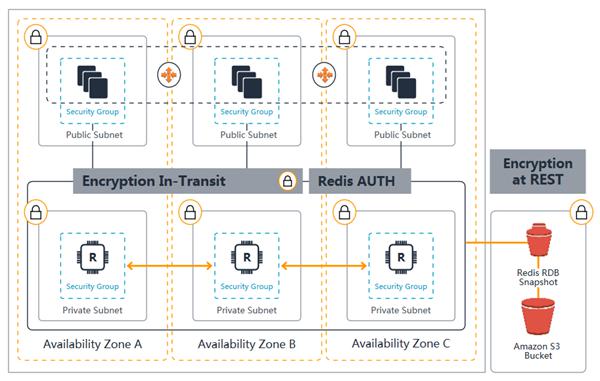- All Exams Instant Download
As the Solutions Architect, which of the following should you do to meet the above requirement?
A company is designing a banking portal that uses Amazon ElastiCache for Redis as its distributed session management component. Since the other Cloud Engineers in your department have access to your ElastiCache cluster, you have to secure the session data in the portal by requiring them to enter a password before they are granted permission to execute Redis commands.
As the Solutions Architect, which of the following should you do to meet the above requirement?
A . Authenticate the users using Redis AUTH by creating a new Redis Cluster with both the –transit-encryption-enabled and –auth-token parameters enabled.
B . Set up a Redis replication group and enable the AtRestEncryptionEnabled parameter.
C . Set up an IAM Policy and MFA which requires the Cloud Engineers to enter their IAM credentials and token before they can access the ElastiCache cluster.
D . Enable the in-transit encryption for Redis replication groups.
Answer: A
Explanation:
Using Redis AUTH command can improve data security by requiring the user to enter a password before they are granted permission to execute Redis commands on a password-protected Redis server. Hence, the correct answer is: Authenticate the users using Redis AUTH by creating a new Redis Cluster with both the –transit-encryption-enabled and –auth-token parameters enabled.
To require that users enter a password on a password-protected Redis server, include the parameter — auth-token with the correct password when you create your replication group or cluster and on all subsequent commands to the replication group or cluster.

Setting up an IAM Policy and MFA which requires the Cloud Engineers to enter their IAM credentials and token before they can access the ElastiCache cluster is incorrect because this is not possible in IAM.
You have to use the Redis AUTH option instead.
Setting up a Redis replication group and enabling the AtRestEncryptionEnabled parameter is incorrect because the Redis At-Rest Encryption feature only secures the data inside the in-memory data store. You have to use Redis AUTH option instead.
Enabling the in-transit encryption for Redis replication groups is incorrect. Although in-transit encryption
is part of the solution, it is missing the most important thing which is the Redis AUTH option.
References:
https://docs.aws.amazon.com/AmazonElastiCache/latest/red-ug/auth.html
https://docs.aws.amazon.com/AmazonElastiCache/latest/red-ug/encryption.html
Check out this Amazon Elasticache Cheat Sheet:
https://tutorialsdojo.com/amazon-elasticache/
Redis (cluster mode enabled vs disabled) vs Memcached:
https://tutorialsdojo.com/redis-cluster-mode-enabled-vs-disabled-vs-memcached/
Latest SAA-C03 Dumps Valid Version with 400 Q&As
Latest And Valid Q&A | Instant Download | Once Fail, Full Refund
Subscribe
Login
0 Comments
Inline Feedbacks
View all comments

